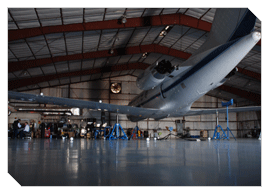

In 2009, Direct Dimensions was approached by Texas A&M University’s Flight Research Laboratory with a challenging yet typical 3D problem. The University Flight Research Laboratory (FRL), while primarily an active teaching facility, also offers both flight and wind tunnel test services. This particular project was for a customer who had contracted the FRL to perform feasibility and conceptual design studies for a flight-test program using a business-jet class aircraft.
This type of ‘virtual’ aerodynamic testing, called CFD analysis, or computation fluid dynamics, requires a dimensionally accurate ‘as-built’ 3D CAD model of this specific Gulfstream airplane. FRL would also need additional 3D models showing the plane in various configurations, such as with and without the engine and with and without the vortex generators.
Given the complexity of these specifications, FRL contracted Direct Dimensions, a reverse engineering company with 15 years of expertise with 3D metrology technologies specifically within the aerospace industry. Their extensive experience in creating accurate 3D models for CFD analysis made Direct Dimensions uniquely suited to work on the team’s project.
Over the course of three days, DDI engineers worked on-site at NASA’s Forward Operating Location in El Paso, Texas to scan the entire OML (Outer Mold Line) of the designated Gulfstream II. The airplane surfaces were captured using the uniquely accurate Surphaser HSX 3D laser scanner. This scanner captured the shape to an accuracy of less than 1/4 of a millimeter with extremely high data resolution. The ease of use and portability of the Surphaser allowed the large plane to be scanned from multiple positions to rapidly obtain all the data for the final CAD modeling process.
With the raw ‘point-cloud’ data gathered during scanning, DDI engineers then created reverse engineered 3D CAD models using PolyWorks, Imageware, and SolidWorks. These digital models allowed FRL to then ‘virtually’ test the aircraft and design modifications in their CFD program and evaluate the suitability of the Gulfstream II for the test program.
Direct Dimensions specifically specializes in the creation of high accuracy aircraft OML models and other aerostructures related reverse engineering and 3D metrology. For more information on this type of work, please visit our PowerPoint presentation entitled “3D Scanning Methods & Equipment for Reverse Engineering Airplane OMLs” and contact Direct Dimensions, Inc.
You can read more about the test program here.